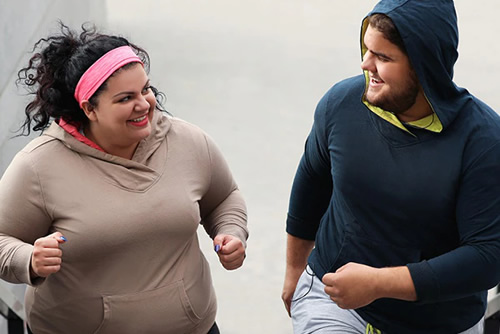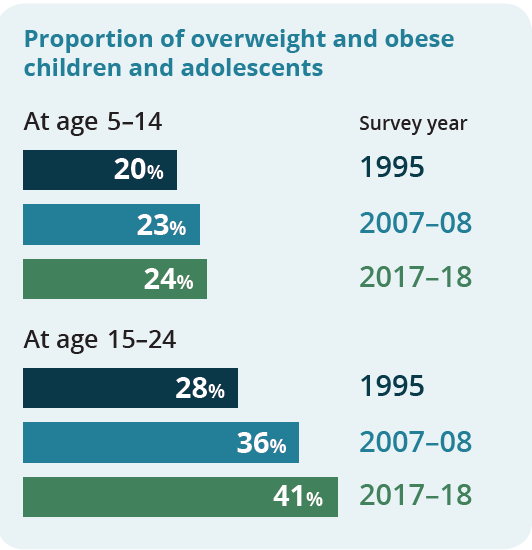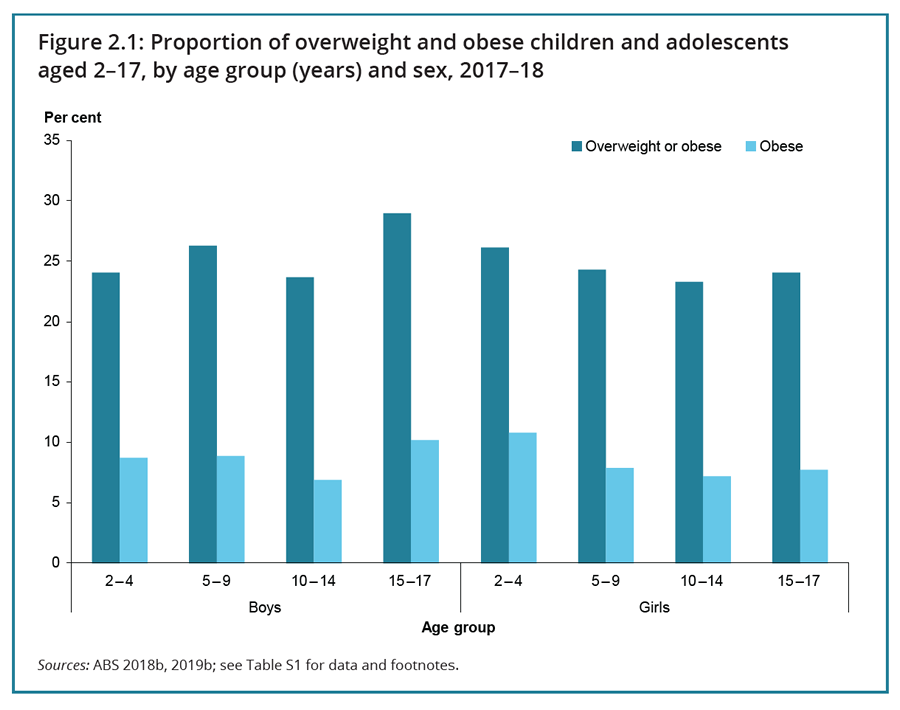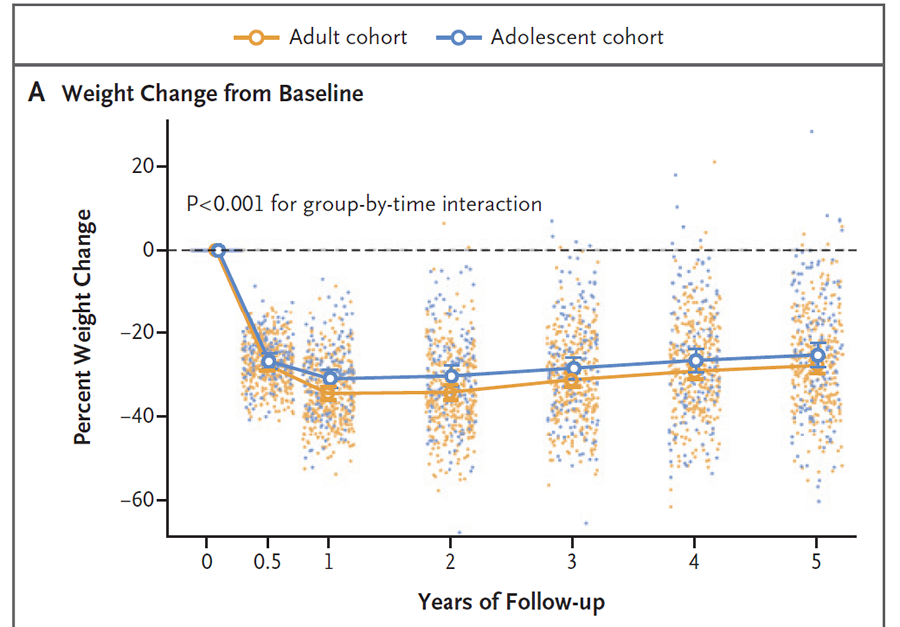
Obesity continues to be an issue of great concern for young people in our society.
Impacts including long term predisposition to health conditions such as diabetes and heart disease but more prominently for many young people are adverse effects on personal development. Bullying and victimisation are common experiences amongst obese children leading to challenges in establishing friendships, relationships, job prospects and development of healthy self esteem.
Government statistics indicate that approximately 25% of the Australian paediatric population qualify as either overweight or obese with the figure increasing substantially over the last 10-15 years.


The proportion of children in overweight/obese category who were able to change back to normal/underweight over time through adolescence was less than 5%.
Causation of obesity in adolescents – key points
• The development of overweight and obesity is primarily due to an energy imbalance, where too much energy is taken in through food and drink, and not enough energy is expended through physical activity. However, there are many other contributing factors, such as individual genetics, and a range of influences from families, communities and broader society.
• Diet and participation in physical activity generally worsen with age—adolescents eat more discretionary food, less fruit, and exercise less than younger children.
• One in 6 boys aged 14–17 consume sugar-sweetened drinks daily, more than double the proportion of teenage girls (1 in 14).
• Children and adolescents who do not get enough sleep are more likely to be overweight or obese.
• Children are exposed to junk food marketing almost 30 times per day and are highly susceptible to its messages.
Bariatric Surgery
The role of weight loss surgery in adolescents has always been somewhat controversial. For younger adolescents who are still undergoing bone growth and pubertal development, nutritional deficiencies usually weigh heavily against intervention.
Many adolescents have however undergone weight loss operations, in this country and overseas. An international group studied the impact of gastric bypass surgery on the adolescent population over a five year period with comparisons made to adult groups having the same procedure. (2)
BMI average was just over 50 kg/m2 for participants.
Over 5 years adolescents had maintained a loss of just over 25% of their body weight (similar to the adult outcomes). Those adolescents suffering diabetes or high blood pressure had excellent remission rates, even more so than the adult cohorts. Complication rates related to bypass surgery were roughly similar to the adult cohort although more adolescents developed a degree of iron deficiency.

Conclusion
The best approach for morbidly obese adolescents remains controversial. Bariatric surgery has a role in selected cases and should be performed only in the setting of a comprehensive multidisciplinary team including paediatricians, dieticians and psychologists to aid with compliance and well being.
References
1. Australian Institute of Health and Welfare 2020. Overweight and obesity among Australian children and adolescents. Cat. no. PHE 274. Canberra: AIHW.
2. Inge TH, Courcoulas AP, Jenkins TM, Michalsky MP, Brandt ML, Xanthakos SA, et al. Five-Year Outcomes of Gastric Bypass in Adolescents as Compared with Adults. 2019;1(22):2136-45.